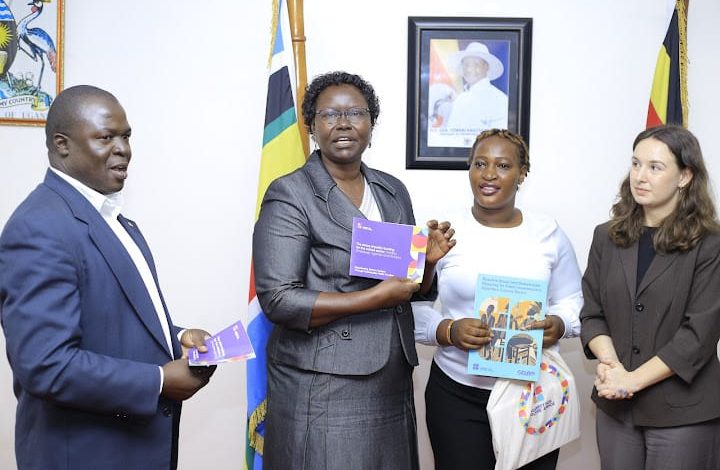CfCA report highlights underfunding of the cultural sector

No Excerpt
The Connect for Culture Africa (CfCA) report on the Baseline Study and Stakeholder Mapping for Public Investment in Uganda has highlighted the insufficient prioritisation of public funding for the cultural sector, which has hindered its growth.
The report was presented to the Ministry of Gender, Labour and Social Development on Monday.
Conducted in March and April 2024, the study was guided by the UNESCO Framework for Culture Statistics (2009) and focused on various domains, including Performing Arts, Visual Arts, Cultural Heritage, Media, and Creative Services.
The study aimed to assess the current landscape of public funding for Uganda’s culture sector and map critical stakeholders to enhance investment and advocacy for cultural development.
The findings revealed that budget allocations for culture remain low, consistently under 0.05% of the national budget, indicating a significant funding shortfall that obstructs the sector’s growth.
The report states that Public funding for Uganda’s cultural sector is severely restricted, with allocations consistently falling below 1% of the national budget.
For example, the sector received only 0.0012% in 2021/22 and 2022/23, slightly increasing to 0.018% in 2023/24, with a projected 0.016% in 2024/25.
The Department of Culture’s 2023/24 budget was approximately Shs9.069 billion, or 0.016% of the Ministry’s budget, and overall government spending on culture, recreation, and religion has hovered at 0.1% over the last five years.
Similarly, local government expenditure on culture remains low, peaking at just 0.4% in 2019/2020, highlighting a lack of prioritisation and funding that has constrained sector growth, infrastructure development, and capacity building.Challenges Identified:
The report highlights foremost among the challenges being the lack of a dedicated budget line for culture within public investment frameworks.
“Without specific classification as an independent vote in the national budget, funds meant for the culture and creative sector are scattered across various institutions, complicating coordination and tracking of resources,” the report states.
While receiving the report, Ms. Juliana Naumo Akoryo, the commissioner for culture at the Ministry of Gender, Labour, and Social Development, expressed her gratitude to CfCA for producing the report, which she believes will assist in addressing financial gaps and other challenges facing the cultural sector.
“I agree that our partnership is still weak. We recognise these issues and look forward to learning from the recommendations provided. ..We cannot do it alone, and you cannot do it alone. We should not work in silos. With this, we shall be able to improve on the legal and policy frameworks,” she remarked.
In her comments, Alma Estrada, the International Project Coordinator for CfAC, mentioned that following the report, they are now working on various advocacy initiatives to build capacity and raise awareness about the potential of Uganda’s creative sectors.
She emphasised that Uganda is one of Selam’s key focus countries, where they are advocating for increased public investment to ensure a vibrant cultural future.
“But this is not the only place where we are. CfCA is a regional initiative, so we started up with four focus markets last year, with the other three being Zambia, Zimbabwe, and Ethiopia,” Estrada said.
Aisha Namatovu, the president general of Pearlwood, praised CfAC for providing over $10,000 (approximately Shs36 million) to support the survey, which facilitated capacity building and allowed for the hiring of a top experts to conduct the research.
“They (CfAC) have funded capacity building in the creative sector, training of the cultural professionals and training of the cultural practitioners. They have funded research for this report and they have also funded the review of the national culture policy,” Namatovu said.
She added, “You have created a great impact. We are currently in the networks, we are talking about providing training and supporting the creative sector in so many different ways and a lot of things we talked about,”
She highlighted that the report chipped into most of the challenges notably lack of information, and the lessons to pick from.
“But as we identified from the beginning, the biggest challenge was the lack of information. We didn’t have the information and that’s why we went back to say, let’s go back and do this baseline and after mapping so that we get to know the exact information from the stakeholders in the industries,” she said.
By examining Uganda’s public budget allocation processes, existing literature, and historical data from entities like Uganda Bureau of Statistics, the research provided a detailed overview of the financial and structural challenges facing the culture sector.




